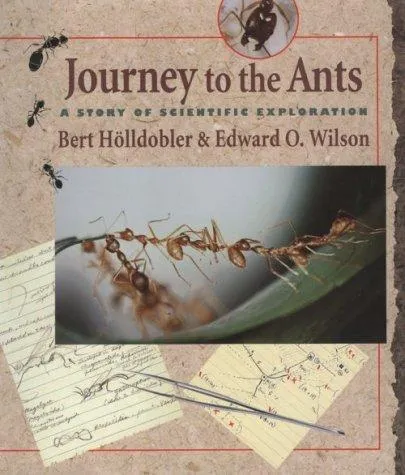1
mention
mention

Journey to the Ants paints a very interesting picture of an ant colony as an intricate super-organism in which individual ants are only small, dispensable, fairly mechanical and easily replaceable walking batteries of exocrine glands that sense their world primarily through array of chemical words, touch, sound, and very poor vision in some cases. The fascinating image I take away from this book is that the colony is the individual, and every ant is like a protein flowing through the veins of the individual, doing various tasks to support the organism. Throughout the book you'll gain an understanding of an ant colony, how it functions, how it is divided into castes, how it controls its environment, migrates, cooperates with surrounding species through various symbioses, fights, and forages. There is a also a lot of discussion of various types of species in the vast and varied ant species universe, together with discussion on how they have evolved over time from wasps. Excellent! I'm leaving out a star because it could have been even better! Very often a stunningly interesting behavior is described, but there is no effort made to explain on a reductionist level how it is achieved through simple rules that the ants may follow. For example, ants can build bridges across leaves with their bodies. How does a single ant decide to become part of the bridge? How does it know where to attach, or how long to stay? I wish there was an attempt to unravel the algorithm every ant follows. Surely, these kinds of experiments can be carried out in laboratory conditions and monitored closely? More generally, I found the book to be fairly light on this process of trying to "debug" an ant. Instead, much of the focus is on simply cataloging the behaviors on a high level. Maybe it's just the grumpy Computer Scientist in me... Oh well. 4/5
— Andrej Karpathy
2013-01-04 on goodreads.com